In capturing today’s market of savvy travelers, design professionals are challenged by the numerous hotel brands that have emerged. With a focus on brand identity, creating authenticity while addressing the particular design standard of that brand, requires a balance between what the brand represents and the client’s design vision. Ultimately, the creation of a memorable guest experience, both personal and unique, is the goal in bringing a traveler back to that brand.
This month we’re chatting with a trio of pros that have all helped create brand prototypes, and are well versed at the art of bringing new concepts to life. Plus, they’re all masters at balancing brand demands with owner wants. Here’s how they maneuver this complicated thicket.

Jacki Arena
Designer and owner of
JAI - Jacki Arena Interiors
How do you learn the particular needs and requirements of a brand and what differentiates that brand?
We study the brand standards and requirements at the start of each project. We find that updates and changes to prototypes can be usually quite extensive. It is typically within these standards that the brands note their key identifying elements which must be included in the design; sometimes very subtle from brand to brand, others more obvious and recognizable.
How does this impact your design process and choices?
We start with brand standards and then take the client’s vision and see how closely they fit together. When they fit well, we stay close to what the prototype suggests. If there is conflict with the vision, we get into modifying and customizing while making sure we remain aligned with both party’s direction.
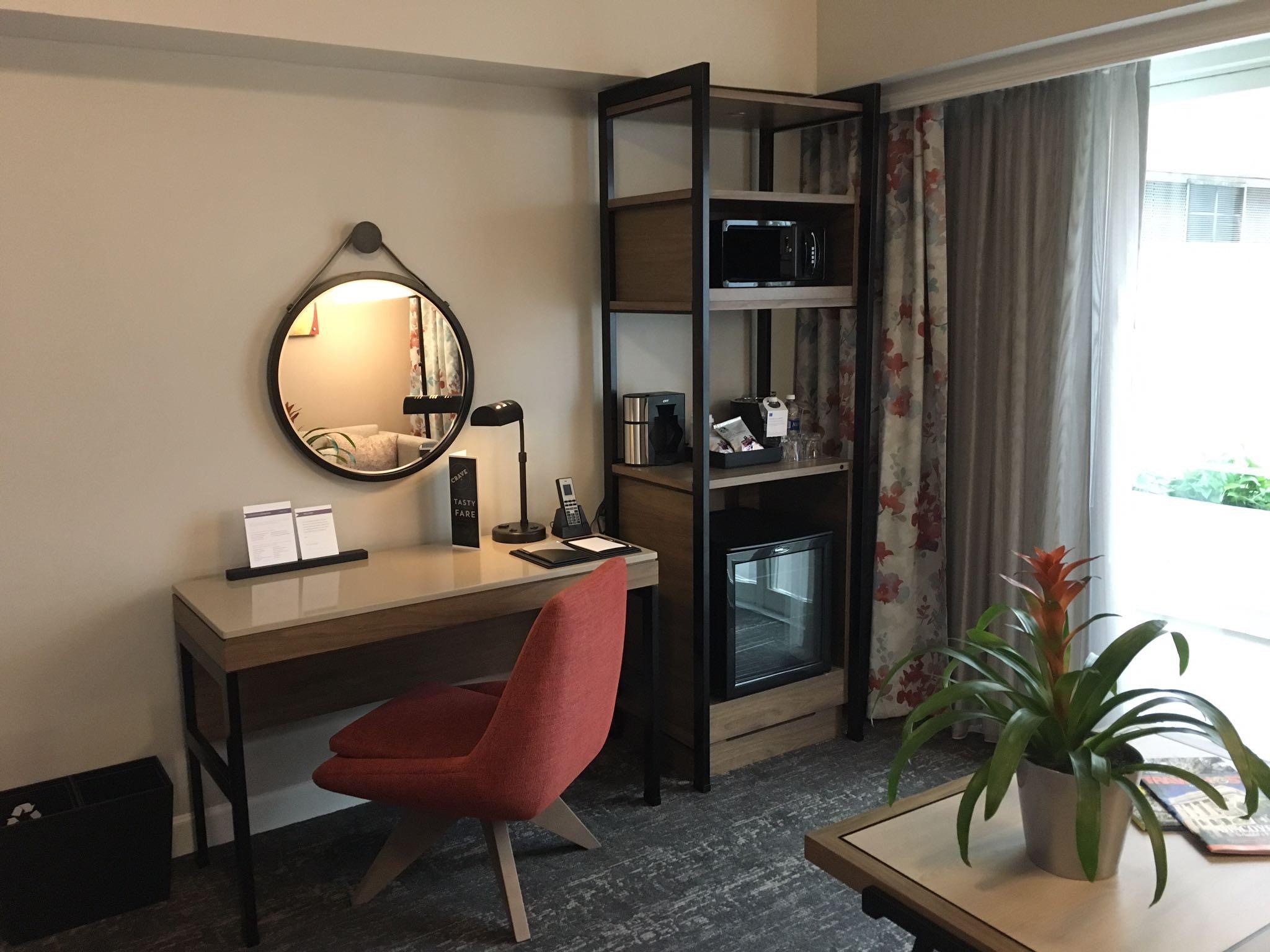 Hyatt Regency Orlando Airport- Designed By JAI- Jacki Arena Interiors and Purchased by GS Associates
Hyatt Regency Orlando Airport- Designed By JAI- Jacki Arena Interiors and Purchased by GS Associates
When designing a new prototype or location for a brand, how do you anticipate technology changes?
A lot of that review leans heavily on the brand and the research provided by the brand. A company such as Hyatt has studied the user of the specific brand. Then we get familiar with the most current products from our different manufacturers.
What elements are important to the design now, that was never on the radar before?
In the case of Hyatt, they require lit bed bases, so we needed to retrofit a motion sensor for guest safety when getting up in the middle of the night. Additionally, mirrors in the bathroom are no longer just lit, but also have nightlights, clocks and Bluetooth built in.
How do design elements trickle down within the different brands- how long does it take a trend to go from Luxury to Upscale?
It doesn’t take long today because we are all exposed to so much instantly. We tend to keep our designs very classic and timeless, but also current, so the trends won’t impact our client’s ROI.
What design elements are most important to your guests?
It’s all about convenience and a memorable experience. Whether it is created by bringing the local flavor into the room using different art elements, accessories and patterns, or with the newest technology, it must be memorable.
When a hotel tries to encourage greater use of public areas, how does this impact guestroom design?
It requires us to do more in public spaces, not less in the guestrooms. For the past few years we have focused on creating public spaces with many options to be “alone together”. The key is options. That has to carry into the guestroom design as well.
How do you think outside of the box, when there’s really no box anymore?
Everything we are creating must be unique. However, “the box” represents standards to an extent, and we go beyond what is standard and expected in order to create a one of a kind memorable experience the guest will want to share with others and repeat.
How do you balance design intent and budget?
Awareness of the brand in addition to 20+ years experience helps us know which manufacturers are within the right price point. Many times, we don’t receive a budget until we exceed it. That is when relationships are critical as we can go back to our reps and manufacturers and ask them to work with us on a solution that we can all be happy with.
How does designing an airport location differ within a brand design?
The guest end user is much different, especially in Orlando where we worked on the in-terminal Hyatt Regency. The average stay is 1-2 nights, and specifically between vacations or international travel. Our goal was to provide tranquility upon arriving to the guestroom so no matter what time zone the guest came from or may be going to, there will be a peaceful transition while there.
List 3 adjectives to describe the Hyatt brand
Sophisticated edginess, Forward thinking, Experiential

Abby Bullard- Designer at Stonehill & Taylor
How do you learn the particular needs and requirements of a brand and what differentiates that brand?
Each brand has their own website and portal directed to by brand design lead members, so we’re exposed to a plethora of standards and information, which is our jumping off point to creativity. While several brands in a family of brands like Hyatt have overlapping standards, each individual brand has specific layouts and verbiage.
How does this impact your design process and choices?
It impacts design quite significantly because we must take our ideas and concepts and adapt them to established brand standards. Sometimes we want to specify a sleeker look, say a more European style, but brand standards will require the coffee table to be 17” high rather than 15”. That changes the look and feel of the design intent, but we never allow this to jeopardize the integrity of the design. Our main objective is to create a space which complies with brand standards, yet functions well and is aesthetically pleasing.
When designing a new prototype or location for a brand- how do you anticipate technology changes?
I’ve worked on re-branding's before, and it’s such a loaded question because no one knows where tech is headed in five to ten years. Plus, location, new or adaptive reuse construction, and other factors play a role. However, we ensure all technology is intuitive to use, unless the concept is focused on tech.
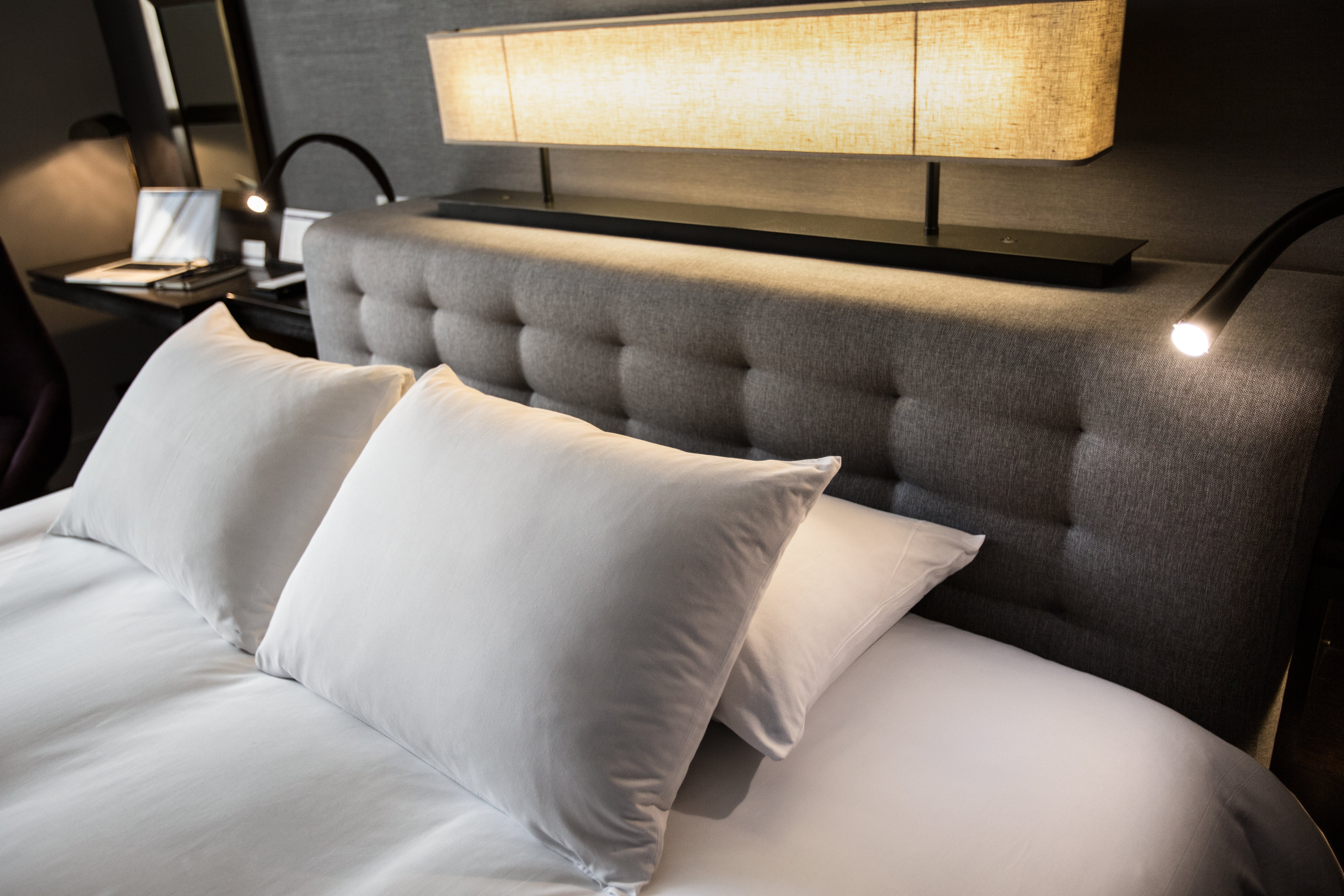 Hyatt guestroom prototype- Hyatt O’Hare - designed by Stonehill & Taylor developed with Samuelson Furniture
Hyatt guestroom prototype- Hyatt O’Hare - designed by Stonehill & Taylor developed with Samuelson Furniture
What elements are important to the design now, that was never on the radar before?
The impact of climate change and mechanical room locations is one. They’re no longer in sub floors and are on rooftop because of flooding issues, for example. We’ve had to evolve building systems and space planning because we must work around mechanical systems and structural changes. In terms of materials, the industry is moving towards more man made materials, such as tiles that look like stone or wood because of their durability and lifespan.
What design elements are most important to your guests? Why?
Guests are looking for rooms to be clean, comfortable and intuitive. Furnishings with great materials and a comfortable bed and sufficient lighting address the need. We tend to over complicate.
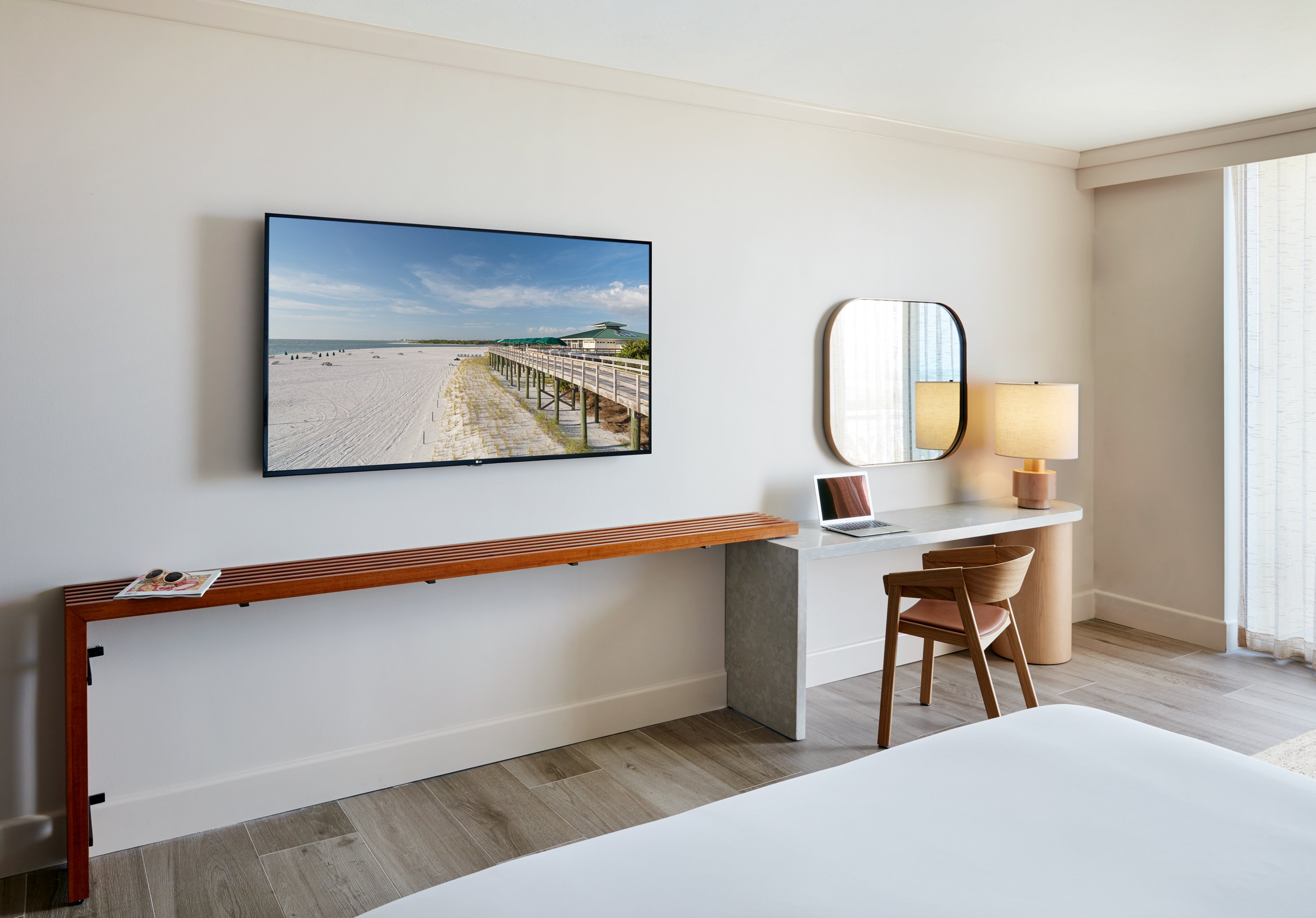 Desk Designed by Stonehill & Taylor - Crafted by Samuelson Furniture
Desk Designed by Stonehill & Taylor - Crafted by Samuelson Furniture
Do different hotel categories of an overall brand share any common, designs or design elements?
One thing they all share, and we recognize, is bedding i.e. the sheets and mattress type. That is typically the only constant as everything else is unique to each of the brands.
When a hotel tries to encourage greater use of public areas, how does this impact guestroom design?
A few years back everyone was taking out work surfaces because they were convinced millennials were going to work in public areas. That didn’t last long and now we’re reinstalling horizontal surfaces in guest rooms. However, today’s desks are more work/play tables where you can sit and work, but also eat and lounge. Guests do want to hang out and be social in a lobby, but only specific brands will be successful with that approach. I do not see that happening within all Hyatt or Marriott.
How do you think outside of the box- when there is really no box anymore?
I don’t like to pull imagery from Pinterest, which many do because it makes me feel like it’s a potential cliché. I like using hand sketches of what you’d do rather than using other imagery. That approach cuts down on repeating yourself or others
How do you balance design intent and budget?
Aim high and edit back, you can always edit. We have a wish list of what we’d like the room to look like. However, there are always levels we can do that maintain the integrity of the design.
Where is the first place you search for inspiration for a new project?
The location, the building if it exists, the neighborhood and demographics, and of course the art and culture of the area.
List 3 adjectives to describe the Hyatt brand
Healthy, Delightful, Swanky

Kathy Moran-Clarson
President and Owner of
KMCA Design, LLC
How do you learn the particular needs and requirements of a brand and what differentiates that brand?
“Brand” is part of marketing. Marketing means “demand creation.” Understanding how owners and brands approach demand creation is central to our interior design helping drive the bottom line. With more and more brands in the marketplace, it’s important to understand what a specific brand stands for, its core values, and any unique elements or features. We spend a large amount of time studying brand standards and directives. If we can visit a new or recently renovated property, even virtually, that can help. We also want to know what guests are saying about a brand to see if their experiences match the brand’s intent, so we monitor social media, too.
How does this impact your design process and choices?
Owners and brands each have their own road maps and our job is to merge the two to get both parties affordably where they want to go with the result being high acclaim from guests. Sometimes these maps point in different directions and sometimes they are closely aligned. It’s the interior designer that brings the two together, so we adjust accordingly.
When designing a new prototype or location for a brand- how do you anticipate technology changes?
It’s more challenging for a new-build than a renovation simply because of construction time and how quickly technology can and will change. For new-builds, we try to use the leading edge of usable and cost-effective technology. This may make the cost of a model room a bit higher, but greatly increases the relevance of the technology by the time the hotel opens. For renovations, we look to include advanced yet affordable technology in a way that is convenient, logical, and easy-to-use for guests.
What elements are important to the design now, that were never on the radar before?
Again, technology is high up on that list. An example is LED lighting. It’s so much more energy-efficient and gives us more design options. With the huge leaps in smart phone capabilities, is traditional work-space in a room relevant, and if so, what dimensions work best? What if owner and brand want to attract those needing work-space in a lobby area? How does that impact in-room design? This goes back to understanding the owner, the brand, and their objectives.
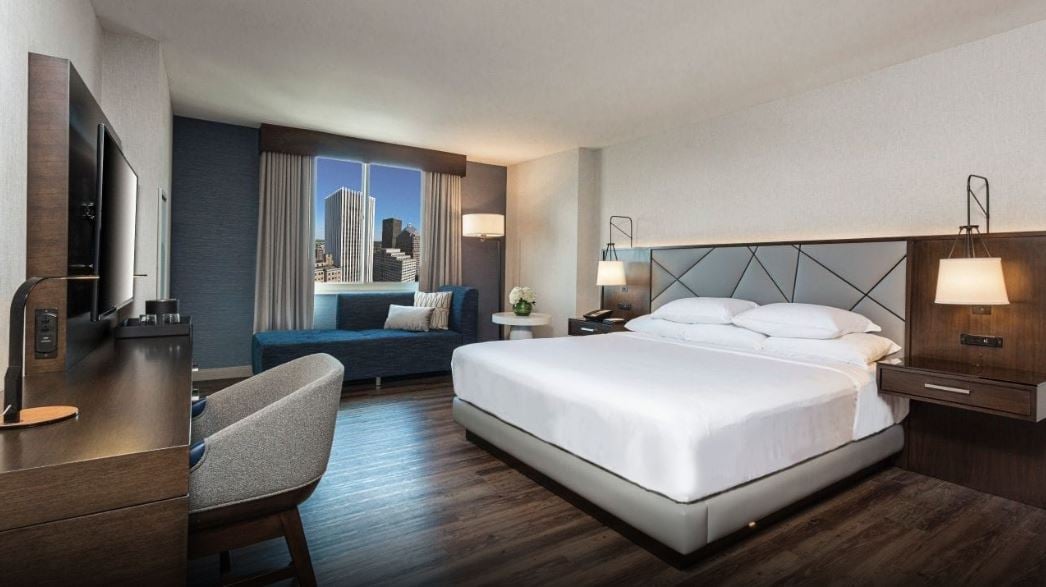 Hyatt Rochester- Designed by KMCA Design and Purchased by Neil Locke Associates
Hyatt Rochester- Designed by KMCA Design and Purchased by Neil Locke Associates
How do design elements trickle down within the different brands?
Think about the white bed spread. It was revolutionary and now it’s in every category of lodging. Remember when a curved shower rod was so remarkable? Now a straight one is the exception. And we are seeing many properties taking tubs out and going all showers. Change in design is constant.
What design elements are most important to your guests? And why?
Lighting, convenience of plug-ins and ports, a comfortable bed, the TV, temperature control, a great bathroom experience. But we do not forget the arrival experience, which sets the tone and creates both anticipation, excitement and expectation. The lobby design is very important as well as the common space, elevators and corridors, which are sometimes overlooked.
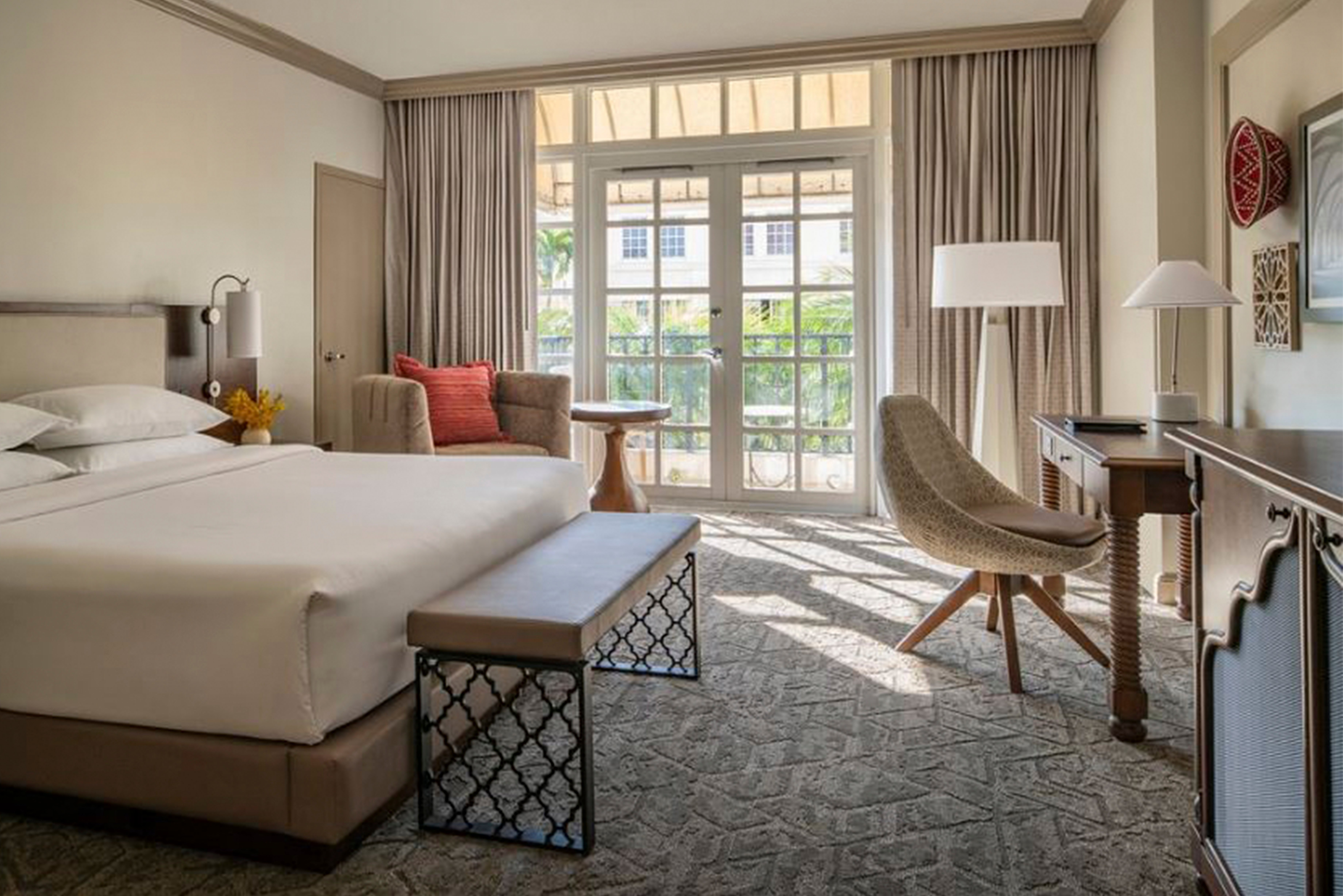 Hyatt Regency Coral Gables Designed and Purchased by KMCA Design
Hyatt Regency Coral Gables Designed and Purchased by KMCA Design
When a hotel tries to encourage greater use of public areas, how does this impact guestroom design?
History has a way or repeating itself. Watch any classic movie featuring hotels built in the early to mid 1900’s and notice how many people congregated in hotel lobbies and public spaces. Hotel rooms were built much smaller back then. Well, now we are seeing several brands downsize rooms by design and make their public spaces much more attractive, inviting, and user-friendly. Younger guests seek out more social environments in a hotel, and if F&B offerings are convenient to the public space, then this design strategy can help increase ancillary revenues without negatively impacting RevPAR.
How has the design of the brand changed through the years?
Established brands continue to evolve through both look and messaging while new brands push boundaries and find new market spaces. It is challenging and fun for designers as we get to push our own boundaries and are only limited by our imaginations and budgets, of course. It comes down to helping brands deliver more diverse guest-stay experiences. So interior design is central to attracting guests who have an experience that creates repeat business, positive reviews, and profit.
How do you think outside of the box- when there is really no box anymore?
I think there is still a box but the lines are blurred, if not open-ended. That’s a good thing. We continue to look closely at the market and region of each property to pull context and inspire our design, but with so many more materials and manufacturing techniques available, it allows designers to be more creative than ever.
How do you balance design intent and budget?
I founded my company on three principles: On Time, On Budget, On Brand. Open, timely and transparent communication between owners, brands and designers is the key to delivering KMCA’s brand promise, and that means not being afraid to ask the hard questions or give an answer someone might not want to hear.
Where is the first place you search for inspiration for a new project
The location of the property and work out from there, like a rock thrown in a lake and the outward- bound rings it creates. We take a holistic approach as we want a natural flow across the entire hotel, but one that excites and even surprises guests.
List 3 Adjectives to Describe the Hyatt Brand:
Grand, Diverse, Rewarding
Going beyond the parameters of brand standard requires careful design ingenuity and creativity. The total result must bring elements of beauty, comfort, technology, location, demographics and budget, while remaining true to owners and their brand.
How would you describe the Hyatt Brand? Comment below with your 3 adjectives.
